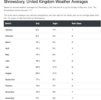LiamPope
Member
I guess the logic is that even with the inefficiencies in conversion, you can store a lot more energy in the same space and therefore the vehicles will travel for much further.
Isn't that only true if it's liquid storage (I'm not actually sure)? Then it needs to be cryogenic which comes with all kinds of engineering/safety problems that might not have been factored in some theoretical efficiency analysis.




